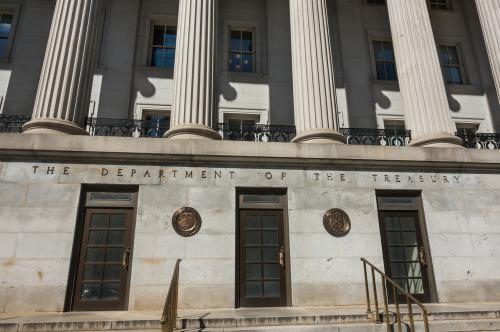Abstract
This article updates the authors’ most recent analysis of the budget outlook to incorporate the latest Congressional Budget Office projections and updated long-run data from the annual reports of the board of trustees for Social Security and Medicare and Medicaid, the Centers for Medicare & Medicaid Services actuary, and the CBO. The authors thank Samuel Brown and Fernando Saltiel for research assistance. All opinions and errors are the authors’ and should not be attributed to the staff, officers, or trustees of any of the institutions with which they are affiliated.
Although the official budget figures have improved from a year ago, realistic budget projections continue to show a troublesome medium-term outlook and an unsustainable long-term outlook. Even with the economy recovering fully by 2018, as projected by the CBO, a path following current policies on taxes and spending will result in deficits close to $9 trillion (4.5 percent of GDP) over the next decade, with the debt-to-GDP ratio exceeding 85 percent by 2022 and continuing to rise thereafter.
The long-term budget outlook is sensitive to assumptions about how healthcare spending will respond to recent legislation. Assuming that current policy holds for the next decade, the long-term fiscal gap ranges between 6.1 and 9 percent of GDP, depending on the assumed growth rate of healthcare outlays. Policymakers and the public will eventually be forced to address those issues. Although a still weak economy limits the scope for large adjustments immediately, addressing the long-term imbalance soon will allow for more reasonable and gradual adjustments.
The Brookings Institution is committed to quality, independence, and impact.
We are supported by a diverse array of funders. In line with our values and policies, each Brookings publication represents the sole views of its author(s).





